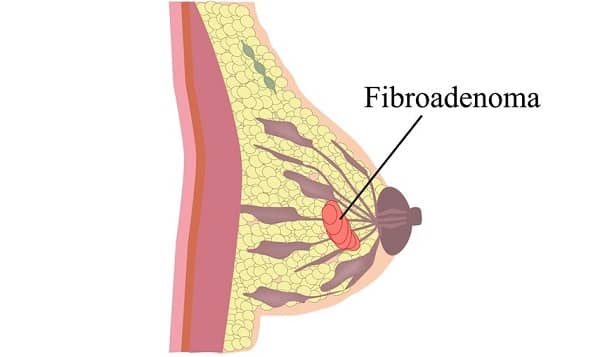Breast Fibroadenoma Removal Surgery is a surgical treatment that is designed to remove a breast cancer tumor while leaving as little good tissue as feasible in its surrounding area. Breast-conserving surgery, which is one of several varieties available, is distinguished by its goal of preserving as much of the tissue as possible. It is often regarded as the least intrusive type of breast surgery available today. In some circumstances, surgery can be performed in conjunction with radiation therapy to reduce the risk of complications.

The cost of Fibroadenoma Removal Surgery in India varies between INR 30,000 to 60,000 at the most prestigious medical facilities. It is possible that the ultimate cost will vary based on various aspects, including the hospital chosen (accreditation and location), the surgeon's experience, the intricacy of the case, cancer's stage, the room category (if a hospital stay is necessary), and others.
In order to treat breast cancer or eradicate a benign (noncancerous) tumor of the breast, breast-conserving surgery is done (fibroadenoma). Breast lumpectomy surgery is frequently indicated for the treatment of tiny, early-stage breast tumors in female patients with breast cancer. Breast cancer survivors who have exhausted all other treatment options for their disease may be candidates for this procedure.
Cysts and fibroadenomas are the 2 kinds of benign breast lumps that can develop:
Cysts: What grows up in your breasts is a collection of spherical sacs packed with fluid. Cysts can be of varying sizes, and there might be and over one of them. It is most common between the ages of 35 and 50 and can come to go at any time.
Fibroadenomas: Fibroadenomas are a form of breast lump that is quite prevalent. These are essentially a strong growth of tissue that is painful to touch when it is new. It primarily affects people between the ages of 16 and 24.
The breast lumpectomy procedure takes between 15 and 40 minutes, based on the size of the lumpectomy site to be treated.
The surgeon may choose to employ an electrocautery knife, which is a type of electric scalpel that uses heat to decrease bleeding during surgery. In order to fulfill the natural shape of the breast, the majority of the incisions are curved (in the form of a grin or a frown) in nature.
Better recovery of the surgical site is made possible as a result. If the tumor can be seen, the surgeon will remove it completely, as well as a margin of normal tissue surrounding the tumor, if this is possible.
An incision will be made in the breast or armpit during the procedure to place a drain to collect excess fluid & prevent it from pooling in the place where the tumor was located. A suction machine is linked to the drain, which assists in the removal of the liquids. After that, the surgeon will cover the incision with stitching & apply a bandage dressing to the surgical wound to prevent infection.
Q1. Can I get rid of breast fibroadenomas naturally?
The treatment for breast fibroadenomas varies depending on the case and severity. They generally function to the female hormones and may enlarge or shrink during times like pregnancy and more. However, if the mass or the lump is causing pain or growing at a fast rate, then it is better advised to discuss it with the doctor for treatment.
Q2. Can fibroadenomas become cancerous if left untreated?
Fibroadenomas are known to be non-cancerous growth and are not associated with the risk of breast cancer. However, if some cases like the subtype of fibroadenoma, the chances of it becoming cancer are associated. It is advised to diagnose the case and see if your growth can put you at risk or not.
Q3. What is the recovery period for fibroadenoma surgery?
The timeline for the recovery period depends on the extent and the type of surgery conducted. It varies from patient to patient and also factors in the removal methods. For cases, the ideal recovery period is one week and can be up to one month for complete healing.
Q4. Is there any complication to fibroadenoma surgery?
The chances of fibroadenoma surgery complicating the issues are minimal. However, if the patient continues experiencing pain, bleeding, signs of infection, or more then it is advised to take it up to the doctor for follow-up.
Q5. What should I do after fibroadenoma surgery?
You may feel slight discomfort or pain during the first few days after the surgery for which you may be prescribed pain relievers. It is also advised that you take sponge baths or clean the area with a cloth instead of bathing till the stitches are removed completely.